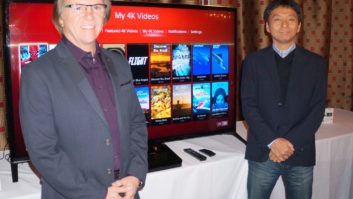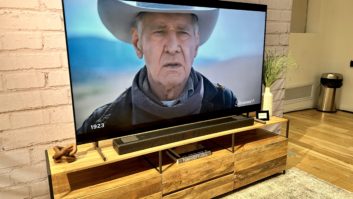SAN FRANCISCO — Sony Electronics U.S. president Mike Fasulo said last week that — at least in this country — the company’s struggling electronics unit appears to be back on course and will make a profit for the full year on a consolidated basis.
The news follows a year-long turnaround process upon his promotion to president last year, and with the assistance of Sony’s sales and marketing troubleshooter Toshi Acuda, who came in under Fasulo’s leadership, the business unit is starting to benefit from a scaledback product and marketing focus that is putting product value to the customer and profitability front and center in planning and market execution.
Fasulo reported at a recent media roundtable, here, that Sony earned record profits for the month of November, including the critical Black Friday shopping period, without resorting to the doorbuster promotions or heavy discounting that normally drive the season.
Instead, Sony’s new strategy is to build the customer experience at the point of sale to win purchases on higher-ticket items.
Instead of focusing on winning marketshare battles across overall product lines, Sony has sought to lead the market only in key categories, including TV (particularly 4K Ultra HD), high-performance audio, digital imaging (particularly mirrorless and action cams), and mobile electronics, Fasulo said.
“I’ve been very clear that this is a turnaround, and it is turning around very nicely and very quickly, which is good,” said Fasulo.
In TV, Sony chose to emphasize 4K Ultra HD TV, and selected a key price point of $1,500 early in the year. Where some other manufacturers sought to sell UHD sets on Black Friday for prices well below $1,000, Sony stuck to its guns – the company’s bestselling UHD model sells for $1,499, he said.
Over the Black Friday sales period, Sony sold over 11,000 4K UHD televisions through Sony’s directdistribution stores alone without deep discounting, he said.
Fasulo called the below-$1,000 Black Friday priceslashing strategies this year, “irresponsible,” adding that such actions were likely the result of manufacturers with misguided inventory problems.
Sony, Fasulo said, won’t have such problems this year, as its year-end inventory position on TV is healthy.
Concerning industry efforts to market Ultra HD TV, Fasulo said, “We can’t forget that this is market creation, and consumers are still confused. The more demonstration and more explanation we can do, the better [it will be] for everybody. Then, you can charge after market share. There’s a crossroad, a shift, where we should all be working as an industry to get excitement about what this new technology is all about.”
In audio, Fasulo said Sony has has taken the high road, and focuses on soundbars ranging from $249- $1,299. Its hottest seller of the year is its $1,299 model. Going forward the company is pushing its new high-res audio players and systems, where it hopes to draw synergies from its sister Sony Music company to feed a renewed appetite for high-ticket, high-fidelity sound.
Fasulo and Okuda said Sony has based its turnaround on a strategy it calls “Gemba” – a Japanese term that represents Sony’s customer experience building around Sony products at retail.
“It’s about selling through products as opposed to load ‘em and leave ‘em. Those days are over,” Fasulo explained.
Despite recent downwardly revised sales estimates for the corporation, Fasulo said Sony Electronics in the United States has been making significant progress developing and growing businesses around the key categories on which it has decided to focus.
Fasulo said that Sony’s managed branded home entertainment departments in 353 select Best Buy stores this year “is doing phenomenally well,” which he quantified as three times the sales volume prior to the department installation.
Sony sends merchandising teams into other direct accounts as well to monitor, train and assist in product presentation and demonstration.
Still, Fasulo acknowledged, that in order to maintain profitability, Sony has reduced the number of accounts that it serves on a direct basis to 50 and “will refine that further next year to 20 retailers across the nation,” he said.
Those accounts no longer handled by direct sales are handed off to a third party which maintains the back-office support.
Sony refine its product line this year, Fasulo said Sony cut its overall SKU count for more than 2,000 items to just over 800, and plans to cut that further in 2015.
Models that are kept must prove that they can generate the best value performance for the customer.
“Our job is to get Sony Electronics in the United States back to a sustainable, profitable entity for the corporation, and we are going to do that by providing the best customer experience,” Fasulo said.
Where Sony has not changed is in “those premium areas that Sony stands for.”
In imaging, Sony has been successful in getting U.S. consumers to switch from full-sized DSLRs to mirrorless interchangeable-lens cameras, Fasulo said. Okuda cited the A6000 and A7 cameras as popular models in the Sony interchangeable camera line this year.
He said that while Sony’s camera market share is running still only a little over 10 percentage points, the company has gained significant momentum in sales of mirrorless models, which bodes well for future growth.












